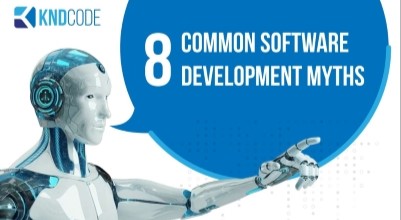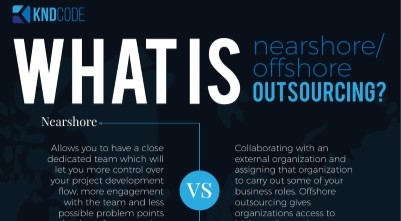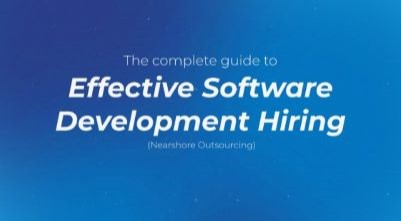Enterprise Software Development Explained
Most modern businesses rely on a complex network of software systems in order to function—but when a business grows large enough, the burden of managing all these systems might become heavier than it’s worth. After your business reaches this stage, it's time to think about investing in enterprise software.
What Is Enterprise Software Development?
There are different kinds of enterprise software systems, but in general, the purpose of enterprise software is to increase the productivity and efficiency of your business by automating, organizing, or otherwise improving a critical business function. The key characteristic that defines enterprise software is that it’s designed to be used by a particular organization, not by individual consumers.
Typically, large or mid-sized companies benefit most from enterprise software. Smaller businesses usually don’t have needs of the same complexity and scale that would require an enterprise software solution. However, there can certainly be exceptions.
Enterprise Software Development vs. Consumer Software
Most consumer software you are likely familiar with is designed with a generalized need in mind. Microsoft Excel is designed for making spreadsheets, TurboTax is designed to help you do your taxes, Dropbox is designed for cloud storage—the list could go on and on. These software applications serve specific functions for individual customers.
Enterprise software is different because it targets the unique needs of the business that will be using it. It isn’t off-the-shelf software designed to perform certain predefined functions in a one-size-fits-all format. Instead, it’s a custom software system designed to be installed directly on your business’s servers where it can support your specific business processes across your whole organization.
Enterprise Software Features
Since consumer-facing software and enterprise software are developed with very different audiences and goals in mind, the design process is usually approached a bit differently. Following are a few of the most important considerations during the enterprise software development process:
Does it perform well? As you might expect, the software’s ability to perform its intended functions is high on the list of priorities whether you’re developing software for consumers or enterprises. Entire companies rely on enterprise software in order to remain operational, so it’s essential for these enterprise systems to perform beautifully. The consequences of a software failure are more severe when it’s an entire organization that’s affected rather than a single consumer.
Is it scalable? Scalability is another important factor for enterprise software because businesses are in constant flux. An enterprise software solution that is implemented today needs to continue to serve its purpose years in the future as well (if it doesn’t, the software is probably a poor investment). The best enterprise software is able to scale with your company as it grows and its needs change.
Is it secure? Like performance, security is one of the most important elements of nearly any kind of software, enterprise or otherwise. If employees, customers, or both are going to be using your enterprise software, it’s paramount to ensure their personal data is protected at all times. This is especially true if your enterprise software processes any kind of sensitive payment information. While a performance failure can force productivity to a standstill for a while, a bad security breach is capable of ruining a company’s reputation for good.
Is it interoperable? Companies don’t run on a single piece of software alone. Keeping a complex organization afloat is almost always a team effort between many disparate systems and networks. Your enterprise software needs to perform just as well as a part of this team as it does in isolation. When your enterprise software is interoperable, it can seamlessly connect to and communicate with each of your other systems, resulting in greater productivity all around. Systems that perform well individually but struggle to communicate with other systems will likely cause more problems than they solve.
How much does it cost? The main drawback of enterprise software is that it can get very expensive. Some large corporations pay millions of dollars for enterprise software. The price will vary wildly depending on the type of software and your company’s specific size and needs. Another major pricing factor is whether you want to develop the software in-house or partner with a development team. You can keep development costs manageable by working with a nearshore development company like KNDCODE.

Examples of Enterprise Software Development
There are a few different types of enterprise software that are each designed to address separate needs within your company. Here are three of the most commonly used kinds:
Customer Relationship Management (CRM)
As the name suggests, businesses use CRM software to oversee customer relationships and interactions. In general, CRMs help companies manage customers’ information, learn about their needs and behavior, and offer them a better customer experience. Some basic CRM functions include:
Collecting customer data that can be analyzed to track trends and gain insights into the customer journey.
Equipping customer support teams with accurate, up-to-date customer information that can help them serve customers better.
- Improving lead management so that the sales and marketing team can make more conversions.
Enterprise Resource Planning (ERP)
An enterprise resource planning system is intended to aid efficiency within a business’s internal operations. Usually, this kind of enterprise software connects an organization’s different software systems and enables access to all of them from a central interface. This has obvious value for a large corporation with a highly complex network of computer systems. You can integrate all kinds of different systems with ERP software, including HR, sales, marketing, accounting, inventory, and many more.
How to Build Enterprise Software
You can break down the process of creating enterprise software into three main steps: design, develop, and deploy.
Design
At the beginning of the project, your leadership team and your developers (whether in-house or outsourced) will need to collaborate to come up with a list of parameters. These are the specifications that outline, in essence, what problems you are trying to solve or needs you are trying to meet. You should also consider technical specifications like what kind of operating system you want your software to run on or whether or not it needs to be compatible with mobile devices. The specifications you settle on now will define the end goal of the software and inform the rest of the development process.
Develop
Once the software has been mapped out in theory, it’s time to execute. The main part of the process will consist of the actual development itself. This step can be broken down into several sub steps, including:
Framework selection: One of the most critical parts of the development process will be choosing the kind of framework to use to build the software. The system’s architecture makes a big difference to performance, cost, interoperability, long-term maintainability—just about every aspect of the software, really. It’s important to think through this step carefully and select a framework that balances capability with stability and cost.
UI and UX design: Good user interface design is important because clunky, unintuitive software won’t do your organization’s efficiency any favors. However, the importance of your enterprise software’s user experience design depends entirely on whether it will be a customer-facing system or purely internal. If it’s a system that customers are going to be interacting with, UX design should be prioritized highly. If the software will only be used by employees, there’s less need to worry about creating an experience and your time and resources are better spent focusing on functionality alone.
Documentation: Even though it can feel like a chore, keeping detailed documentation is essential if you want your enterprise software to be maintainable. Documentation isn’t a step that occurs at a single point in the development process; it should be an ongoing project that develops alongside the software itself. Keeping diligent documentation from day one will do immeasurable good down the road when you need to repair or update your software. If you neglect documentation now, you will create a big headache for anyone (maybe you or your team) who finds themselves working on it in the future.
Testing: Once development is finished, the software needs to be tested before it can be deployed. Enterprise software usually requires rigorous testing because it’s implemented on such a large scale with so many variables. Remember that any problems you find and fix before launch are problems that won’t require downtime to fix later. Each of the different elements of the software, including functionality, UI and UX, security, scalability, and interoperability all need to be tested thoroughly.
Deploy
Once your enterprise software makes it through the testing stage, it’s finally ready for deployment. All that’s left to do is launch the software and start using it. Make sure you take the proper steps to introduce employees and/or customers (whichever is applicable) to the new system so that everyone can hit the ground running. Technically, the software is done at this point, but there’s still more to do. You should continually gather and analyze data about your software that can inform ongoing decisions about maintenance and upgrades.
Enterprise Software Vendors
Enterprise application solutions are a great choice for any company that feels like it’s nearing the point of outgrowing its ability to manage its systems manually. This usually happens when a small business starts hitting significant growth and transitioning to a mid-sized business, but it could happen at any point in your business’s lifespan. Maybe you already feel that your business has reached this point—if that’s the case, contact us. KNDCODE is ready to provide you with the custom enterprise software development services you need at a cost we think you’ll like.
Ebooks
KNDCODE'S eBooks your gateway to knowledge and expertise in software development. Our curated collection of insightful and practical eBooks covers a wide range of topics, helping you enhance your skills and unlock your full potential. Our free eBooks provide valuable insights, best practices, and real-world solutions to empower your career in the ever-changing world of software development.

Software Development Myths
Here are 8 common software myths and the truth behind each of them.
Read more
Nearshore vs Offshore SD
Nearshore vs Offshore Software Development. What's the difference?
Read more
Hiring Guide (Dev)
Have access to the complete guide to effective Software Development hiring
Read more
KNDCODE Credentials
Solutions to the most complex operational challenges.Learn more about our capabilities.
Read more





